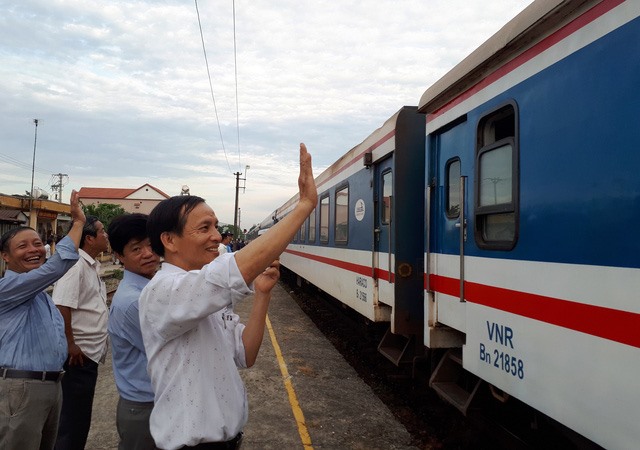 Society
Society

The Government monopoly in the rail industry has diminished competition and was in fact pushing the sector to the edge of crisis, economic experts said yesterday.
 |
| The State monopoly in the rail industry has diminished competition and pushed the sector to the edge of crisis, economic experts said yesterday.— Photo tuoitre.vn |
HÀ NỘI — The State monopoly in the rail industry has diminished competition and pushed the sector to the edge of crisis, economic experts said yesterday.
The railway sector was brought up as a prime example of a monopoly crushing an industry during a conference on reforms to State monopolies organised by the Central Institute for Economic Management.
Presenting a report at the conference, Dr Nguyễn Thị Luyến from the institute said that the Việt Nam Railway – the State-owned group who runs all railway networks in the country – lacked motivation to increase quality while reducing ticket prices due to its monopoly power.
That led to a much smaller piece of the market pie for the rail industry under harsh competition from the booming aviation and road sectors.
According to Luyến’s report, the number of train passengers decreased from 11.2 million in 2010 to only 9.5 million in 2017. That translated to a plummet of market share in passenger transport of the railway sector from 0.48 per cent in 2010 to about 0.23 per cent seven years later.
The industry also witnessed a reduction in cargo transport during the period, with its market share falling from 0.97 per cent to 0.39 per cent, or from 7.8 million tonnes to 5.5 million tonnes.
“Despite playing an important role in Việt Nam’s socio-economic infrastructure, the rail industry has been isolated, outdated and lacks connectivity,” she said.
Việt Nam’s current rail network has a total length of 3,143km, of which trains run on three kinds of track gauges. The century-old one metre gauge accounts for 85 per cent of the tracks while the rates of standard and dual gauge were only six and nine per cent respectively.
Luyến added that all 5,957 train cars, including 1,010 passenger cars and 4,947 cargo ones, had been in use for a very long time.
“The impression of the railway infrastructure for the last couple of years has been dripping investment and that everything it had was outdated for decades,” she said.
Economist Phạm Chi Lan said that the rail industry “did not deserve its current situation”.
While the railways were a common means of transportation in other countries, she said, Việt Nam made a mistake by forgetting to connect the rail system with roads and ports.
“This made the railways fail to keep and expand their advantage in transport,” Lan added.
Economist Lê Đăng Doanh, meanwhile, said the rail industry was falling into a crisis as it failed to compete with other transport sectors while its market shares kept falling.
Without an establishment powerful enough to oversee monopolies, it was very difficult to solve State monopolies in not only the rail industry but other sectors despite the existence of the Law on Competition, he said. — VNS




